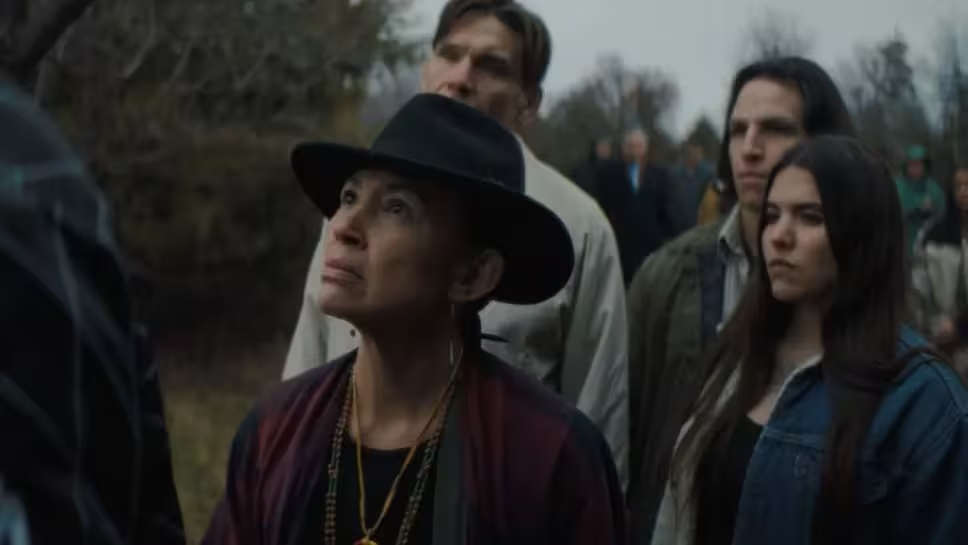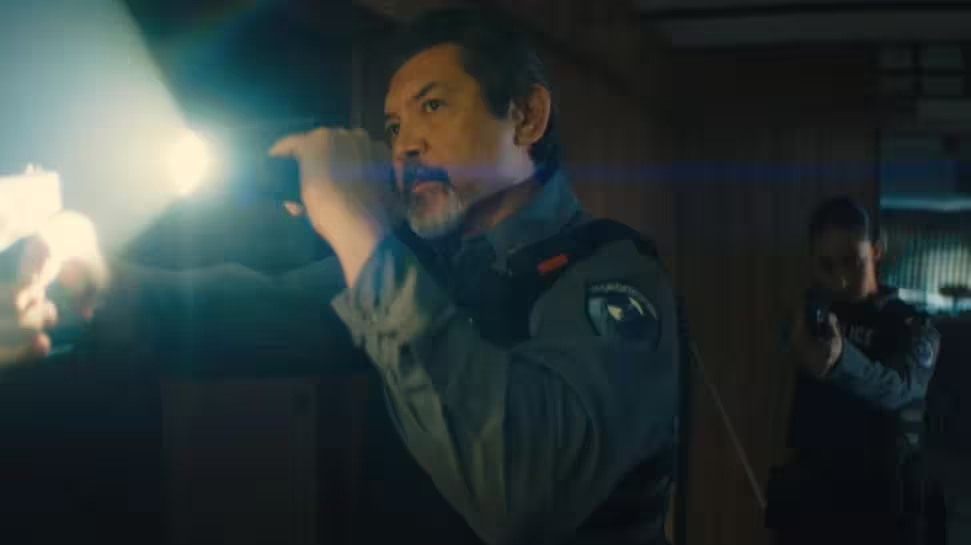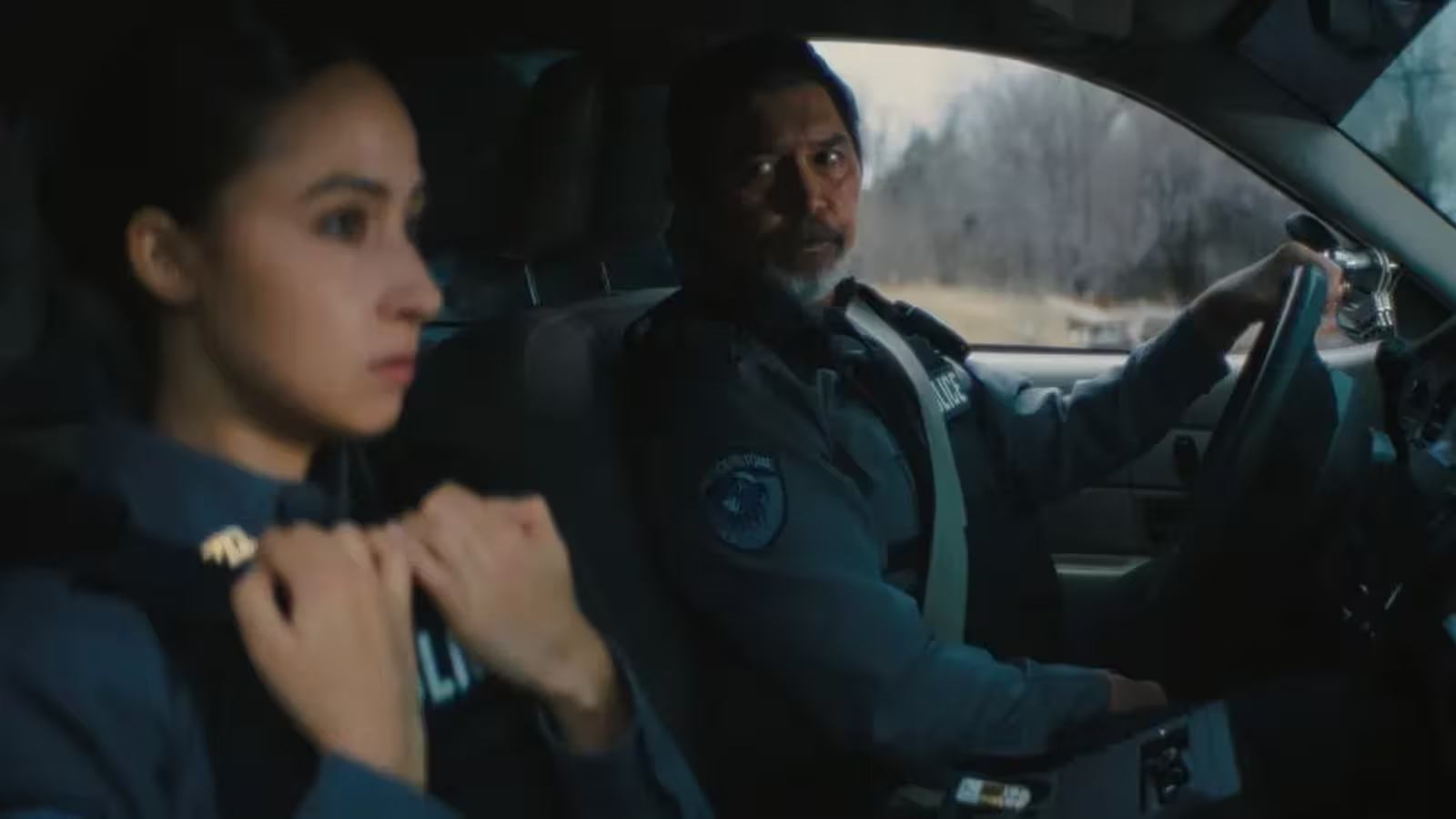10 Minutes
A New Indigenous Crime Drama That Puts Authenticity First
Vincent Grashaw's Keep Quiet arrives as a taut, atmospheric crime thriller that marries commercial pulse with an intimately observed portrait of life on a rural Indigenous reservation. Anchored by Lou Diamond Phillips as Teddy, a seasoned tribal cop with a hard edge and a complicated past, and Elisha Pratt as Richie, a volatile fugitive whose return threatens to ignite violence, the film mixes procedural momentum with emotional depth. Keep Quiet world premiered out of competition at the 78th Locarno Film Festival and is already making waves in the festival circuit for its gripping story, committed performances, and detailed approach to Indigenous representation.
Plot Summary: Tension on the Reservation
Keep Quiet centers on the search for Richie, a ruthless figure whose presence on a rural reservation exposes dangerous undercurrents and suppressed secrets. Teddy, a veteran lawman who married into the community, must train and work alongside Sandra, a rookie cop portrayed by Dana Namerode. Together they navigate a landscape where kinship, loyalty, and long-held grievances shape how justice is sought and delivered. As Teddy and Sandra pursue Richie, they uncover layers of grief, family ties, and the cross-jurisdictional friction between tribal law enforcement and county sheriffs. The narrative unfolds as a gritty crime thriller but is equally invested in the human cost of violence, the complexity of belonging, and the moral compromises people make to protect those they love.
Cast and Characters
Principal Cast
- Lou Diamond Phillips as Teddy: A worn, no-nonsense tribal police officer who brings a lifetime of experience, contradiction, and fierce loyalty to his role. Phillips gives Teddy a textured humanity, showing a man haunted by his own demons yet determined to stand for his community.
- Elisha Pratt as Richie: A dangerous returnee whose presence threatens to tear the reservation apart. Pratt, known for supporting turns in prestige projects, channels lived understanding and volatility into a memorable antagonist who is never one-note.
- Dana Namerode as Sandra: Teddy's trainee, whose developing partnership with the older cop provides much of the film's emotional and dramatic propulsion.
- Supporting cast: Nick Stahl, Irene Bedard, Lane Factor, and Kimberly Guerrero round out a strong ensemble that helps the film shift fluidly between tense set-pieces and quieter, character-driven moments.
Behind the Camera
- Director: Vincent Grashaw, who returns to Locarno after debuting Bang Bang there, directs with an eye for procedural momentum and small details that make the setting feel alive.
- Screenplay: Zach Montague provides a script that blends thriller beats with observations about community, identity, and trauma.
- Producers: Ran Namerode and Angelia Adzic of Randomix Productions, Cole Payne of Traverse Media, and Vincent Grashaw. Lou Diamond Phillips, Marcus Red Thunder, and Richard Janes serve as executive producers.
- Sales: Visit Films is handling international sales.

Production Notes: Filming on Location and Cultural Collaboration
Keep Quiet was shot on location in Oklahoma, primarily on the lands of the Cheyenne and Arapaho peoples and in nearby small towns. Choosing to film in and around the communities that inspired the story allowed the production to capture a lived-in atmosphere and practical details you only find on location: the architecture of small-town precincts, the rhythms of local life, and the landscape that frames every scene.
Central to the film's authenticity was actor and technical advisor Marcus Red Thunder. With prior experience advising productions like Longmire, Red Thunder served as a cultural liaison to the Cheyenne and Arapaho nations and the Cherokee nations, helping the filmmakers approach storytelling with respect and accuracy. His contributions ranged from on-set coaching to advising on moments of ceremony and everyday life, and he even appears in the film in a brief but meaningful scene.
One standout production anecdote: during early visits, the filmmakers were invited to see a herd of roughly 600 bison. That encounter sparked an on-screen sequence that now anchors the film visually and thematically, and it became Lou Diamond Phillips' first day on set. Little moments like this underscore the collaborative relationship between the filmmakers and the communities who welcomed them.
Authenticity, Representation, and Tribal Dynamics
A defining feature of Keep Quiet is its insistence on getting cultural and procedural detail right. The creative team intentionally avoids naming a specific tribe on screen, a decision guided by Marcus Red Thunder to encourage universality and to prevent the story from being read as representing a single community. Instead the film explores dynamics — cross-jurisdictional tensions between tribal police and county sheriffs, the experience of marrying into a reservation, and the presence of mixed-heritage officers — that appear in Indigenous communities across the continent.
Grashaw and his producers prioritized Indigenous participation not just in front of the camera but behind it. Production designer Rebekah Bell and other Indigenous crew members contributed to sets, props, and design choices that help the film feel rooted and respectful. The result is a film that not only features Indigenous stories and faces but is informed by Indigenous sensibilities in its creative DNA.
Performance Notes: Teddy, Richie, and the Grit of Human Conflict
Lou Diamond Phillips anchors the film with a performance that balances toughness with vulnerability. Teddy is a complicated lead: a protector who can be brusque, even unlikable at times, yet whose motives are grounded in love for his family and community. Phillips emphasized the need for nuance, creating a character who is both flawed and sympathetic.
Elisha Pratt's portrayal of Richie is equally compelling. Pratt, whose credits include Killers of the Flower Moon and True Detective, approached the audition process as an opportunity to take risks. Director Grashaw recalls being immediately seized by Pratt's reading, a reaction that confirmed the casting choice. The chemistry between the leads, and between Teddy and Sandra specifically, lends the film its emotional stakes and a texture reminiscent of classic cop dramas while remaining distinctly rooted in its Indigenous setting.
Script and Direction: A Balance of Entertainment and Depth
One of the production's stated ambitions was to make a commercially engaging film that still treats its themes with weight and sincerity. Grashaw wanted a movie that could reach a broad audience — suspenseful, accessible, and responsibly told. The screenplay by Zach Montague delivered a sturdy foundation, and the director's approach emphasized preparedness combined with openness on set. Phillips praised Grashaw for being detail-oriented during scripting while also allowing actors to inhabit scenes without excessive overdirection.
The result is a film that plays like a crime thriller yet refuses to thin out its characters for the sake of plot. Scenes are shaped to reveal both action and interior life, allowing viewers to feel the community's pulse alongside the detective story.
Critical Reception and Festival Run
Keep Quiet debuted at the Locarno Film Festival, where it screened out of competition and attracted attention for its craft, performances, and cultural sensitivity. After Locarno, the film is slated to continue its festival journey, including a screening at Oldenburg. Early responses highlight the movie's ability to merge genre thrills with authentic storytelling, praising the leads and the production's low-key but resonant approach to Indigenous life on screen.
While full critical consensus will emerge as the film reaches wider audiences, the initial festival buzz points to Keep Quiet as a film that will appeal to fans of crime thrillers, independent dramas, and socially conscious cinema alike.

Personal Takeaways and Why Keep Quiet Matters
Keep Quiet succeeds because it treats its setting and characters with empathy and rigor. This is not a moralizing social drama, nor is it a pulpy genre exercise. It sits in the productive middle ground where entertainment meets authenticity. The film’s willingness to show imperfect protagonists, complicated systems of authority, and the everyday realities of reservation life creates a story that feels specific and universally resonant.
For viewers hungry for films that combine crime storytelling with deep human stakes and culturally informed perspectives, Keep Quiet is a noteworthy entry. It demonstrates how genre filmmaking can be a vehicle for meaningful representation when directors, writers, and communities collaborate with mutual respect.
Where to Watch and What to Expect
Following its festival screenings, Keep Quiet is expected to pursue broader distribution through festival deals and international sales handled by Visit Films. Cinephiles can anticipate a film that offers both gripping chase sequences and quieter, character-driven scenes — a movie to watch for performances, craft, and the way it foregrounds Indigenous voices in a mainstream genre.
Whether you attend a festival screening or catch Keep Quiet when it hits streaming or theatrical release, expect a tightly directed, emotionally layered crime thriller that stays with you after the credits roll.
Final Thoughts
Keep Quiet is a film rooted in place and people. With committed performances from Lou Diamond Phillips and Elisha Pratt, respectful collaboration with Indigenous advisors and communities, and a director focused on delivering both entertainment and truth, this crime drama stakes a claim as an important, engaging piece of contemporary cinema. It is a reminder that mainstream genres — when handled with humility and craft — can illuminate lives that are too often misunderstood or overlooked. This is a film designed to reach a wide audience and to do justice, in both tone and detail, to the stories it tells.
Source: hollywoodreporter



Leave a Comment